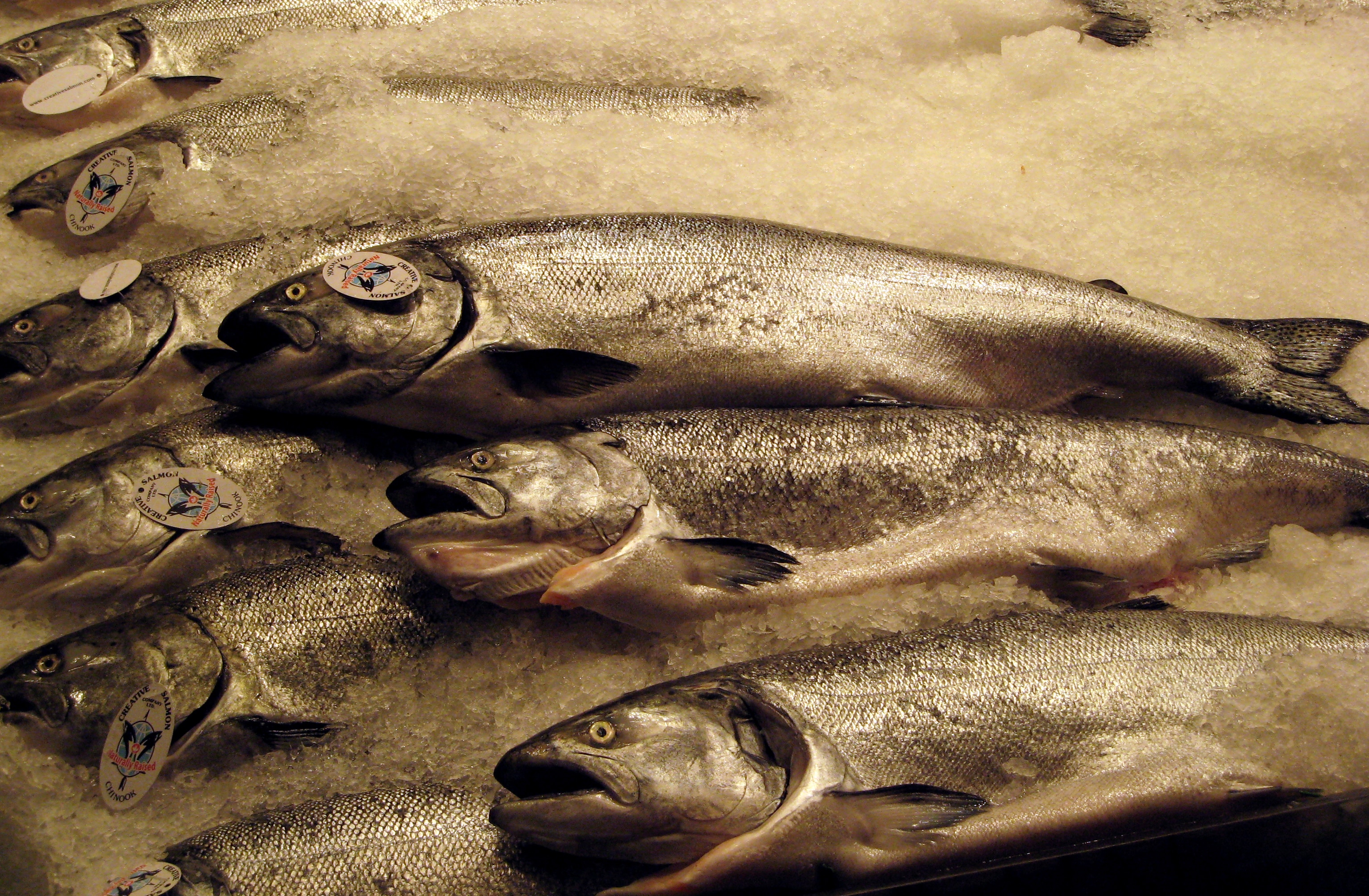In my video Diabetes and Dioxins, I explored a nationwide study that found a strong dose-response relationship between industrial toxins and diabetes. Since then, Harvard researchers have reported a link between persistent pollutants like hexachlorobenzene and diabetes in their Nurse’s Health Study (See Food Sources of Perfluerochemicals). This is supported by an analysis they did of six other studies published since 2006 that showed the same thing. The Harvard researchers conclude that “past accumulation and continued exposure to these persistent pollutants may be a potent risk factor for developing diabetes.”
Where is hexachlorobenzene found? In a U.S. supermarket survey, salmon and sardines were most heavily tainted with hexachlorobenzene, with salmon “the most contaminated food of all.” Farmed salmon specifically is perhaps the greatest source of dietary pollutants, averaging nearly ten times the PCB load of wild-caught salmon.
Wait, isn’t there a flaw in this argument? Since many of these chemicals were banned in the 70’s, the levels inside people have been going down, whereas the rates of diabetes have been shooting straight up. Therefore, how could pollutant exposure be causing diabetes? This puzzle may be explained by our epidemic of obesity. The nationwide study found that the association between these toxins and diabetes was much stronger among obese subjects than among lean subjects. As people get fatter, the retention and toxicity of pollutants related to the risk of diabetes may increase.
So we’re not just exposed by eating the fat of other animals; our own fat can be a continuous source of internal exposure because these persistent pollutants are slowly but continuously released from our fat stores into our circulation.
They don’t call them “persistent pollutants” for nothing. These chemicals have such a long half-life that people consuming regular (even just monthly) meals of farmed salmon might end up retaining these chemicals in their bodies for 50 to 75 years.
Hexachlorobenzene in fish has been tied to diabetes; what about the mercury? A 1995 study highlighted in my video, Pollutants in Salmon and Our Own Fat, out of Japan found that diabetics do seem to have higher mercury levels in their body. Mercury alone does not seem to increase diabetes risk, though. It may be the simultaneous exposure to both dioxins and mercury that increases risk, so the safety limits for dioxins and mercury individually may underestimate the risk when they’re consumed together in seafood.
So while the pharmaceutical industry works on coming up with drugs to help mediate the impact of these pollutants, a better strategy might be to not get so polluted in the first place.
Unfortunately, because we’ve so contaminated our world, we can’t escape exposure completely. You have to eat something. Some foods are more contaminated than others, though. Exposure to these pollutants comes primarily from the consumption of animal fat, with the highest levels found in fatty fish like salmon. Farmed Atlantic salmon may be the single largest source of these pollutants, and that’s the kind of salmon we most commonly find in supermarkets and restaurants.
We hear about advisories warning pregnant women to avoid the consumption of food containing elevated levels of pollutants and mercury, but as a public health journal article points out, since these toxins bio-accumulate in the body for many years “restricting the exposure to these pollutants only during pregnancy would not protect the fetus or future generations against the harmful effects of these hazardous chemicals.”
For the existing links between seafood and diabetes risk, see Fish and Diabetes and I explored this concept of our own body fat as a reservoir for disease-causing pollutants in Diabetes and Dioxins.
More on hexachlorobenzene in my video Food Sources of Perfluorochemicals.
Our body has a tougher time getting rid of some toxins than others:
- How Fast Can Children Detoxify from PCBs?
- How Long to Detox From Fish Before Pregnancy?
- The Wrong Way to Detox
The best way to detox is to stop toxing in the first place.
-Michael Greger, M.D.
PS: If you haven’t yet, you can subscribe to my videos for free by clicking here and watch my full 2012 – 2015 presentations Uprooting the Leading Causes of Death, More than an Apple a Day, From Table to Able, and Food as Medicine.
